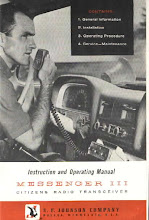I was over-enamoured of Cahiers, trusting too much to my limited French, though I was right about Daney. (from 96 0r 97)
I was a Cahiers du Cinéma addict
“Monsieur, vous n’avez rien contre la jeunesse?”, a street vendor of Cahiers du cinéma asks Jean-Paul Belmondo’s Michel Poiccard in Jean-Luc Godard’s legendary film A bout de souffle: “moi, je prefere les vieux,” responds Poiccard, eliciting a disgusted response from the vendor. Cahiers du cinéma, which along with its French rival Positif, has maintained throughout its turbulent career a defiantly intellectual approach to cinema, may be 47 years old, its jeunesse long gone along with the jaunesse of its famous early yellow cover page, but people in Britain, like Poicard in the film, no longer wish to know about it, if its erstwhile distributors are right. Early in 1996 they decided to relinquish their British distribution of Cahiers, which now no longer can be purchased by francophone cinephiles from the European Bookshop in Soho, the French Bookshop in South Kensington and the sundry street vendors which once stocked it in London. The only recourse now is to take up a yearly subscription.
If it is true that sales of the magazine in Britain had dwindled to such a low point that it became a loss-making title, what are we to glean from that decline? Either that there has been a diminution in the market for the intellectual consideration of the medium of cinema or that many of its British readers have suddenly taken up yearly subscriptions. Of these two speculations, however, it is I fear the former which seems more likely. One recent ominous indication of this decline is the impending closure of what is perhaps London’s finest ‘art house’ (a term I reluctantly use) cinema, the Lumiere on Saint Martin’s Lane.
What we are currently bearing witness to is what the French urbanist Paul Virilio refers to as the “industrialistaion of perception”.
The recent disappearance from the shelves of Cahiers du cinéma is, in fact, symptomatic of a sea-change in the British cinema-goer’s relationship with French film in particular. Instead of awaiting the new Godard (none of whose films have been distributed here since 1990), we await the new Emmanuelle Béart; instead of the new Garrel (never screened in Britain, yet arguably the foremost contributor to French cinema in the generation after Godard) we anticipate the more acceptable faces of charlatans such as Patrice Lecomte. Like Michel Poiccard we prefer les vieux: the europudding costume drama, the traditional love story featuring the perennially pouting Béart or the ditzy Binoche (the recent film by Belgian director Chantal Akerman featuring the talented Binoche may break this trend) or the work of prolific crowd-pleasers and nouvelle vague grand-daddies Chabrol and Rohmer. We spurn the work of those who continue to forge new possibilities for cinematic expression, by simply acting as if it was not there. It would appear that Cahiers du cinéma and Jean-Luc Godard are superfluous to the requirements of the year in Provence generation.
This fact is most tangibly revealed in the critical acclaim and almost universal appeal amongst the “chattering classes” of Kieslowski’s Three Colours trilogy. Kieslowski is a great colourist, a weaver of complicated but ultimately simple tales of coincidence and parallelism. His work offers pleasing diversions but cannot compare with the altogether more rigorous work of Godard in the same period (the recent screening within the BBC2 series TX of Godard’s JLG/JLG was a rare emergence from the shadows).
Cahiers du cinéma itself has not been immune to sea-changes. Having been founded by Bazin in 1950, it became the radical voice of the French nouvelle vague, helping filmmakers such as Truffaut, Godard, Rivette, Chabrol and Rohmer himself to prominence, its criticism becoming increasingly sophisticated in the 1960’s as it absorbed some of the intellectual ferment of structuralism and post-structuralism. Paralleling Godard’s own trajectory in the early 1970’s, it first embraced and then promptly rejected Maoism. It re-emerged under the helmsmanship of the late lamented Serge Daney (perhaps the greatest cinema critic) and has held its own ever since, with regular contributions from old hands such as Serge Toubiana (the current editor) and a continually excellent base of younger aspirants to Cahiers stardom (although a recent letter published in Cahiers berated its editor for the lack of contributions by anyone under thirty-something). Quintessentially French, Cahiers du cinéma belongs to a world where the government still funds an indigenous industry which could not otherwise financially survive. It is a world where younger filmmakers such as Carax, Dubroux, Assayas and Desplechin all write and critique before they make films; a world where it would be unthinkable to embark on a film career without a thorough grounding in cinema history. Cahiers du cinéma is part of a broad intellectual spectrum, and, in its day has been capable of forging strong interdisciplinary links with such intellectual luminaries as Roland Barthes, Gilles Deleuze and Paul Virilio. In short it is unique.
I have taken out a subscription to Cahiers, but it is not quite the same as rushing to the European bookshop to grab a copy of the latest issue, retiring to the French House for a demis, reading the most recent interview with Godard on the way home, for half an hour transforming the tube into le metro and East Putney into Saint Germain des Pres. Moi je prefere les jaunes, les Cahiers jaunes!
Sunday, 12 January 1997
Subscribe to:
Comments (Atom)
